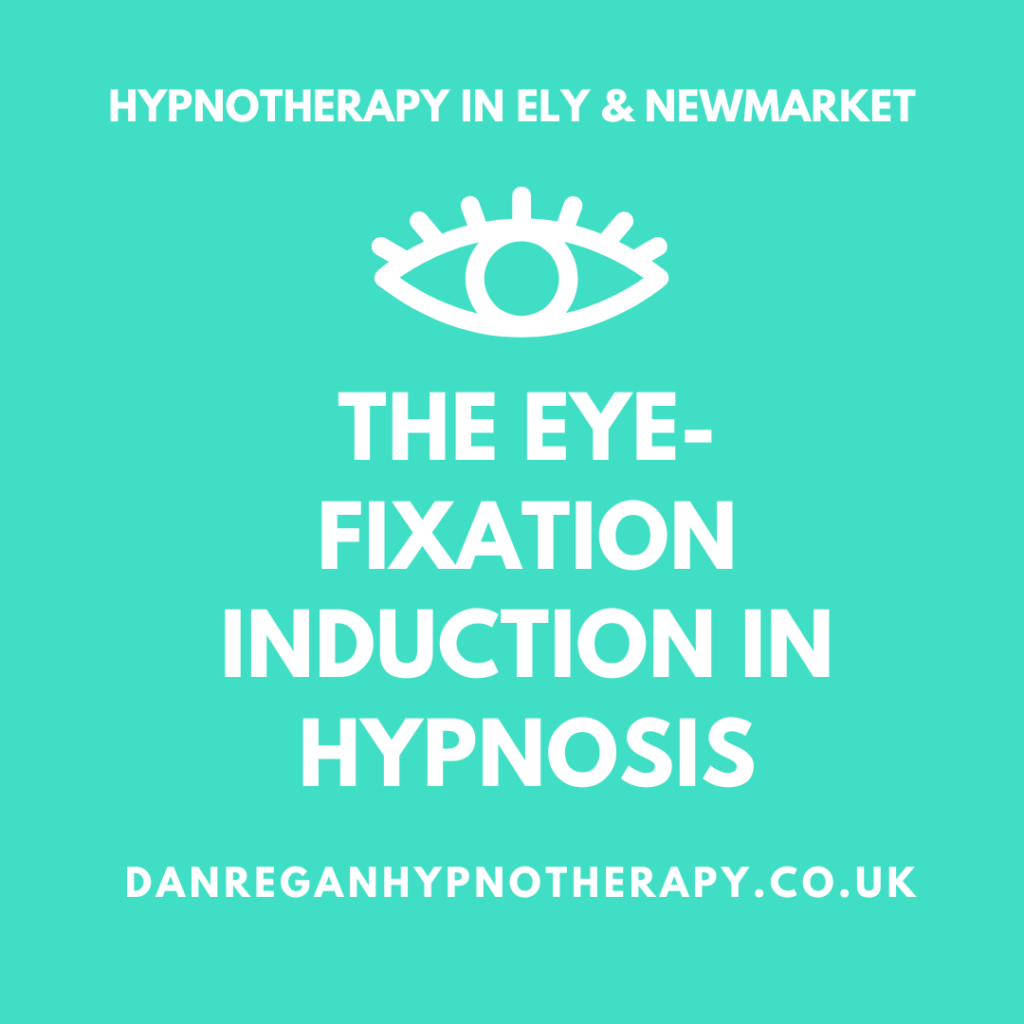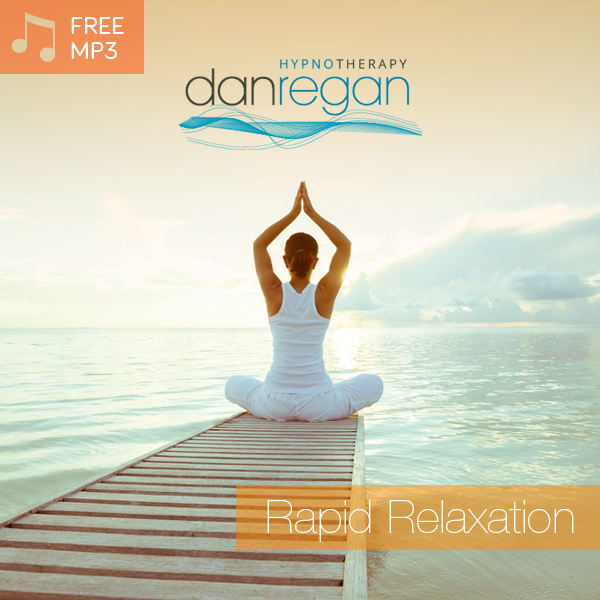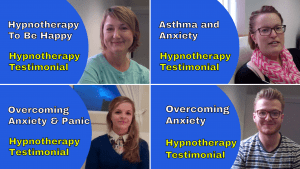
The Eye-Fixation Induction in Hypnosis
If you have been a client of mine, or used my hypnosis downloads, then you’ll know that the process of hypnosis involves engaging your thoughts and mindset towards achieving your specific goals, such as overcoming anxiety. You engage your focus, imagination and concentration as part of entering hypnosis.
As I’ve covered before, hypnosis involves using and engaging your mindset, cognitions, imagination, motivation, belief and expectations in particular ways that help you to achieve beneficial therapeutic changes. It is not something that is done to you (as anything on TV would have you believe) but rather something you are actively engaged in. Hypnosis helps you to take control over your thoughts, feelings and behaviours, rather than feeling like you are controlled by them. You move from feeling stuck in a certain pattern, to being in control of a new, more helpful, way of doing things.
There are many, many ways to induce hypnosis, including the eye fixation induction process I am talking about here. The hypnotic induction becomes your cue, or signal, to adopt a positive mindset, to engage in the process and to be mentally engaged in what you are doing towards achieving your goal. Hypnosis is a process that you actively participate in rather than being a passive process that you respond to mechanically resulting in hypnosis (which of course is great, because you are learning to take control over the things that go on inside of your mind rather than just trying to deal with them or needing a hypnotherapist to be there).
The Eye-Fixation Induction For Hypnosis
The eye fixation induction technique was originally developed by James Braid and involves you fixing your gaze on some specific spot or object (e.g. a spot on the wall or the end of a pen held by the therapist). The specific spot should cause a slight strain upon your eyes as you gaze up at it.
In a hypnotherapy session (or during self-hypnosis), as you stare at the specific spot, suggestions are given that encourage your eyes to grow tired and want to close. This can be done through suggestions such as recalling a time you felt very tired and your eyes felt like closing, telling yourself that your eyelids are getting heavy and want to close, or imagining a bright light/gentle breeze that makes you feel like blinking and closing your eyes.
The basic premise here is to aim to produce a great deal of strain upon the eye muscles by looking upwards at the fixed spot (without moving/tilting head). This position enhances the tiredness felt around the eyes for the purpose of achieving eye closure. This is a form of ‘coupling’ in that the natural effect of fatigue occurring is coupled with suggestions of fatigue happening. The eye-fixation induction involves you focusing your attention and concentration on the point of eye fixation.
However, it’s more than merely a form of natural eye fatigue as it also involves you engaging your imagination to help along the process of closing their eyes. You need to use your thoughts to imagine your eyelids getting heavier, to tell yourself that they want to close and to know and expect it to happen. Once you have closed your eyelids, suggestions and other cognitive processes can be employed to help you to achieve your goals from the therapy.
Eye Fixation and Hypnosis
The eye-fixation induction (as with all other hypnosis induction processes) becomes a cue to adopt the hypnotic mindset. That is, that hypnosis is a process that the client is actively participate in, rather than being a passive process they respond mechanically to resulting in hypnosis. It is something you do rather than something that is done to you somehow.
Hypnosis is a cognitive process involving hypnotic suggestions, mental imagery techniques and cognitive strategies with the intention of evoking ideas and cognitions that lead to certain desired hypnotic responses. Hypnosis is conceptualised in terms of a hypnotic ‘mindset’ comprising of ordinary processes, such as our beliefs, our imagination, our expectations, our attitude towards hypnosis, our level of motivation and our depth of engagement with the role of being hypnotised.
Thus hypnosis is about inducing a set of attitudes or mindset and the induction (as with the eye fixation induction here) becomes the cue to adopt the hypnotic mindset. The induction is the trigger for you to adopt the hypnotic mindset whereby you are motivated to be hypnotised, confident in your ability to respond, optimistic about the process and where you expect to automatically experience the responses being suggested or imagined.
The induction becomes the cue or signal for you to adopt a positive and receptive mind set where you then focus your attention completely on the things being suggested and view them as cues to actively imagine the responses being described.
As well as being an option in the therapy room, the eye-fixation induction is something that you can learn and it becomes a skill you can practice and get better at, and it can then be used effectively as part of self-hypnosis. You can practice eye fixation repeatedly until you have learnt how to enter hypnosis yourself with increasing confidence in your own ability to enter hypnosis.
Eye-Fixation Induction Hypnosis
A described above, the basic steps of the eye-fixation induction process involve adopting a positive mindset and then fixing your gaze on one spot whilst giving yourself suggestions for your eyelids getting heavier and wanting to close. Once your eyes are closed you would then move on to therapeutic steps (such as using one of the processes I’ve outlined in recent blogs).
Whilst there is no script as such, here are the steps you can follow to induce hypnosis and which you can then practice repeatedly to get better and better at.
Firstly, sitting in a nice comfortable position, and keeping your head still, find a spot or an object on the wall or the ceiling for you to look at. Pick a spot well above your own eye line, without moving your head so that you have to look upwards with your eyes, and let your attention and focus be completely on that spot on the wall or the ceiling above and in front of you.
As you keep your attention on that spot, notice the sensations of heaviness developing in your eyelids, as if your eyelids are getting heavier and heavier. Continue to focus all of your attention on that spot, and if your eyes wander from time to time, you can just gently bring them back to that spot right there.
Start to imagine that your eyelids are getting heavier, and start to imagine and think how nice it will be when you allow them to close and relax. As you keep focusing on that same spot, notice how your eyelids feel as if they are becoming heavier and heavier while the rest of your body is feeling more and more comfortable and relaxed.
As you continue to concentrate, allow your body to relax more and more with every breath, and as you focus on that spot, really imagine and tell yourself that your eyes are feeling as if they are getting heavier and heavier and becoming more and more difficult to keep open.
You can start to look forward to how much more relaxed and comfortable they are going to be when you allow them to close. Just like times when you’ve felt sleepy and your eyelids felt heavy and wanted to close, and how nice it feels when you finally decide to close them and let them relax. Notice how every blink feels so good and you want to keep those eyelids shut, or your eyes could close all by themselves whenever you’re ready. And if they aren’t yet closed, you can just let them close now and drift into a comfortable relaxation and go deeper into hypnosis, letting your eyelids relax.
With your eyes closed you can let the muscles in your eyes and eyelids relax and let that comfort and relaxation flow from your eyelids and down throughout your body into every muscle relaxing.
If you want to relax deeper with your eyes closed you can remember times, places, moments where you’ve experienced that depth of calmness, or just imagine what it would be like if you had all the ease, all the comfort and all the calmness.
You can work through your body and relax each part of you in turn. Let all the muscles through the top of your head relax, the muscles in the back of your head, through your face, jaw, neck, shoulders and so on to deepen relaxation.
Having done so then, inside your mind, imagine a screen, like a movie screen, and on that screen have the word ‘relax’. Make it big, bright, bold and colourful, so that word relax fills your mind. And as you look at that word relax in your mind, gently and slowly repeat that word ‘relax’ to yourself, in a way that’s just right for you, yet gently and slowly say the word relax to yourself. As you repeat that word relax, let every muscle relax and go deeper and deeper into that feeling.
Having developed the calmness and relaxation in your mind and body, you can bring this process to an end or move on to any other strategies and techniques that you are aware of.
To your health and happiness,
Dan Regan
Online Skype and Zoom Hypnotherapy
Face-to-face hypnotherapy in Ely & Newmarket
Struggling with anxiety, stress, worry and fear and need some help? Find out how I can help with a Complimentary Hypnotherapy Strategy Session. Learn more here: Appointments
Find out what dozens of other people have said after their hypnotherapy sessions with Dan: Hypnotherapy Testimonials
And check out these powerful hypnosis downloads that can start helping you right away with anxiety, confidence and more: Hypnosis Downloads




0 Comments